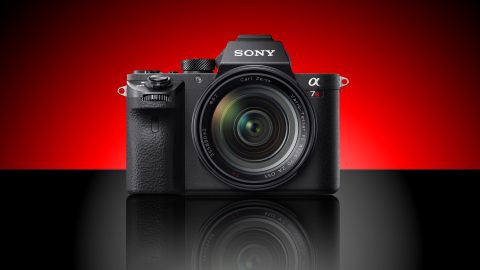Why you can trust TechRadar
With 42.4 million effective pixels the Sony Alpha 7R II is the highest-resolution compact system camera currently available, beating the previous holder of the crown, the 36MP Sony Alpha 7R, by a considerable margin. This hike in pixel count enables the new camera to beat both its predecessor and the Nikon D810 for detail resolution, but it can't quite match the 50MP Canon EOS 5DS and 5DS R, the highest pixel-count full-frame cameras available.
The A7R II scores a couple of other firsts for full-frame cameras, having 5-axis image stabilisation and a backside-illuminated sensor. The first innovation makes it possible to shoot stills at significantly lower shutter speeds than would otherwise be possible, while the latter plays a part in keeping noise levels down as sensitivity rises.
Although it has the highest pixel count of the Sony A7 series, Sony has made the A7R II much more attractive to videographers with the ability to record 4K footage, writing to either a memory card or an external recorder. Naturally, there's also a collection of Full-HD recording options, and Sony's Picture Profile options enable you to create footage that meets your requirements, whether those are producing footage that looks good straight from the camera, or video that's ripe for grading.
The performance of the autofocus system can be a little variable, which means it's not the ideal choice for serious sports enthusiasts or pros, but it is capable of getting sharp results in quite challenging conditions, and it's worth getting to know the various options.
Sony has also taken the opportunity to make a few handling improvements with the A7R II; it's now more ergonomic in shape, making it more comfortable to hold.
We liked
One of the most attractive aspects of the Alpha 7 series is that the cameras are small for full-frame models, yet have an extensive feature set and lots of control options. Having a full-frame sensor enables the photosites (pixels) to be made larger than on an APS-C format sensor of the same pixel count, so image quality is better; it also offers the ability to restrict depth of field dramatically to blur backgrounds and emphasise subjects.
As with many of its other cameras, Sony has given the Alpha 7R II lots of customisation options, which means that many of the buttons and the Function menu can be set to your preferences. The camera feels well made, and with a couple of exceptions the controls are well laid out.
Having an electronic viewfinder (EVF) is a significant bonus in tricky exposure situations, as you're able to preview the effect of camera settings. While the A7R II's EVF tends to be a little more vibrant than the scene and the final image, it provides a superb, clear view, and in decent light manual focusing is a cinch.
We disliked
I found the rear control dial a bit of a stretch to reach with my thumb, and the video record button is oddly located and awkward to operate when the camera is hand-held. And that creaking grip is disappointing.
It would be helpful for the stills and video features within the menu to be separated out, so that there are fewer options to scroll through and options are easier to find. In addition, it would be nice if there were two customisable Function menus, one for stills and the other for video.
A touchscreen would also go some way to speeding up menu navigation and settings selection, as well as AF point selection.
When the A7 and A7R were first announced their price helped make them an attractive alternative to the likes of the Canon 5D Mark III and Nikon D810. The A7R II is much more expensive, with a street price that's only around £400/$500 lower than that of the Canon 5DS.
Even taking the sensor design and additional video technology into account, this seems a lot for a brand that's trying to establish itself as a full-frame camera contender, and which has relatively few directly compatible lenses. Perhaps it's a mark of how big a chunk of the market Sony has been able to bite off, or maybe of how much it thinks videographers are prepared to pay.
Final verdict
The Alpha 7R II isn't perfect, but it's a very good all-rounder that's capable of delivering top-quality high-resolution images in a wide variety of situations – and it weighs a heck of a lot less than its DSLR competition. In fact the A7R II is such a good all-rounder that if it weren't for the price difference between it and the A7 II you'd start to wonder about the future for the 24MP model.
Many pros are starting to look seriously at compact system cameras. The A7R II's AF system may not quite match that of similarly priced SLRs, but it's more than good enough for general photography, and the camera comes with a viewfinder that enables you to see what you're going to get, a very capable stabilisation system, and high-end video features.
However, pros who are used to DSLRs also want a wide range of high-quality lenses. Sony is working on this, promising to have 20 directly compatible optics available by early 2016. We'd like to see some wider fast primes as well as longer telephotos, and f/2.8 optics that compete directly with the offerings from Canon, Nikon, Sigma and Tamron.

